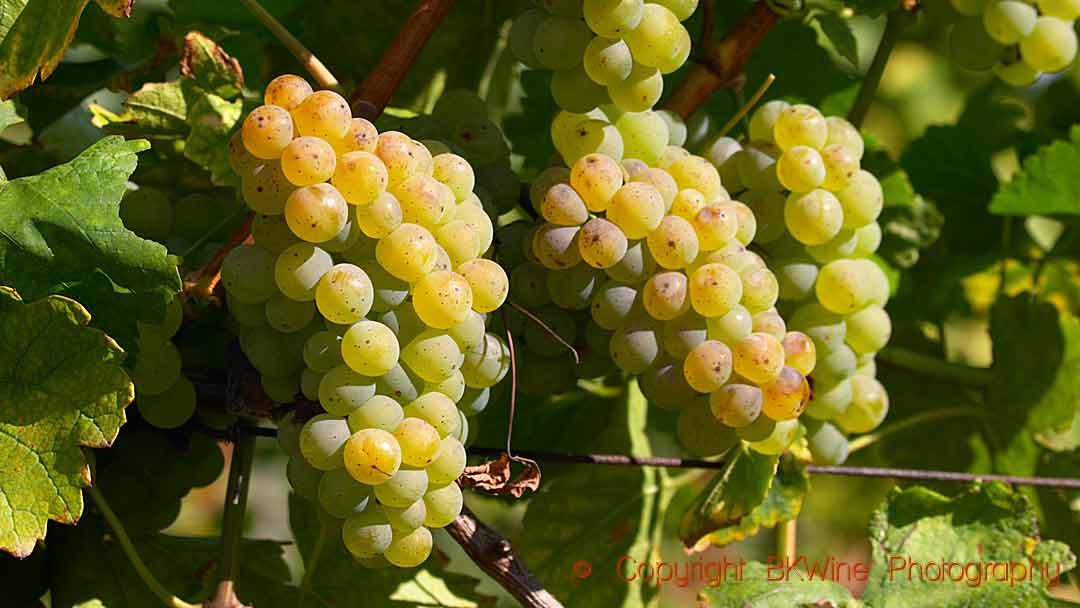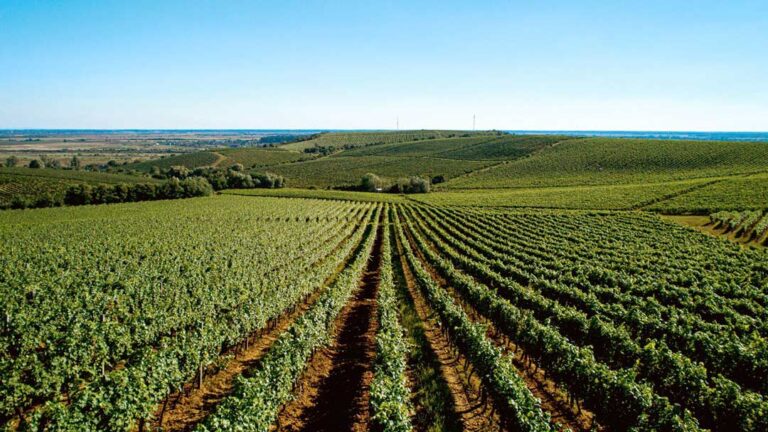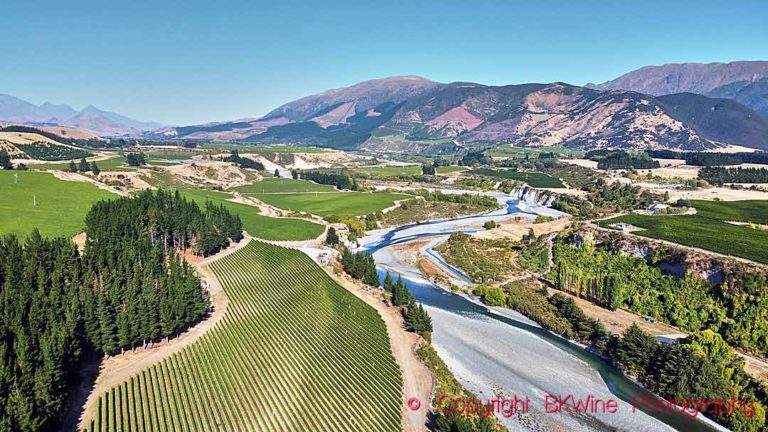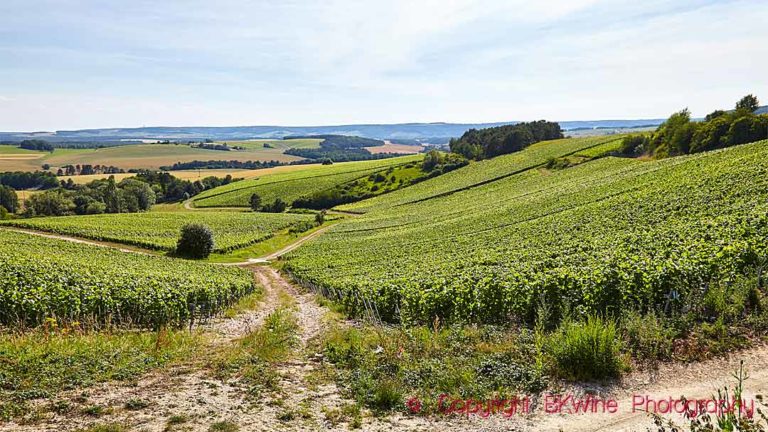Everyone knows Californian wines and probably also Washington and Oregon wines. But the fact is that most states in the United States, perhaps even all of them, make wine. One of the most important, after these three already mentioned, is New York. In the northern part of the state, on the border with Canada, is Finger Lakes. The region is on its way to fame to the delight of all lovers of cool climate wines. We taste three elegant Finger Lake wines and the three producers talk about the future of the wine region.
Grapes have actually been grown in the Finger Lakes region for a long time. In fact, Finger Lakes was an established wine region long before Washington and Oregon. But while the west coast developed its wine industry with European grape varieties – Vitis vinifera – the producers of Finger Lakes have traditionally used native American grape varieties, mainly concord, a Vitis labrusca. That has historically not helped them to reach notoriety.
A shorter version of this article has been published on Forbes.com.
The helpful lakes
Finger Lakes, with its finger-shaped glacier lakes, has a cool, even cold, climate. Summer is short, and winter is long and hard with temperatures down to minus 20-23 degrees C. Without the lakes’ moderating influence, it would probably not be possible to make wine here. Thanks to the cold water in the lakes during spring, budding is later than it otherwise would have been, which reduces the risk of spring frost. In autumn, the lakes, now heated by the sun, extend the growing season.
But even with the lakes, it is a challenging climate for Vitis vinifera grapes.
But that does not stop the region from gaining respect as a serious and ambitious riesling producer. Riesling is the most important variety after concord. Other vinifera grapes also show good results, such as gewurztraminer, pinot gris, grüner veltliner, chardonnay, pinot noir and, not least, cabernet franc.
Mosel similarities
Peter Weis comes from the German Mosel Valley but settled in Finger Lakes and now runs Weis Vineyards. He likens the climate here to that found in his home region, except that it is now warmer in the Mosel. “Finger Lakes is where Mosel was 20 years ago,” he says.
He likes it here. Being able to make ice wine adds to the attraction. “My friends in Germany are jealous. They can’t do that very often in Germany anymore.”
The around 130 wine estates are mainly gathered around the four largest lakes, Canandaigua, Keuka, Seneca, the largest, and Cayuga. Around 3,000 hectares are covered with vines, according to AVA Finger Lakes.
We met Peter Weiss on Zoom and three of his Finger Lakes winemaker colleagues: Kelby Russell from Red Newt Cellars and Colleen and Sebastian Hardy, who run Living Roots Wine & Co. All of them have experience from other regions and climates.
Colleen and Sebastian at Living Roots make wine in Finger Lakes but also in Australia. Sebastian is a sixth-generation winemaker in Adelaide, South Australia. Colleen was born in Rochester in Finger Lakes. They met and decided to joint on the same path. “We were keen to make our own thing”, Colleen says. Now they run the urban winery of Living Roots in Rochester. They buy grapes from different growers. The couple also makes wine in South Australia, so with two harvests a year, their schedule must be rather busy.
Kelby Russell grew up outside of Rochester. He wasn’t supposed to be a winegrower; his studies had a completely different focus. “I went away after college, got the wine bug a little by mistake, in Italy, and it really stuck with me. I ended up doing a harvest in Finger Lakes, went to Marlborough, Tasmania, Australia and came back here.” And now he runs Red Newt Cellars.
Riesling and other grapes
Concord may be the most cultivated grape yet in Finger Lakes, but riesling will make the region known outside New York’s borders. “Thanks to the coolness, riesling ripens slowly here, which gives rich but still very fresh aromas,” says Colleen.
Living Roots Bone Dry Riesling 2019 is the proof of that, deliciously dry and crispy. (US retail: ~$26)
The growing season continues well into autumn. “Riesling In Finger Lakes is a lot about waiting for the ripening until the very end of the season”, says Sebastian. “We let the grapes sit on the vines to develop a little more.”
Peter Weis is also quite focused on Riesling, in varying degrees of sweetness. But he also has many other grapes. Grüner veltliner, the Austrian grape, for example, performs well here. “It has lower natural acidity than riesling; my style is fresh apples”, he says. Weis Vineyards Grüner Veltliner 2019 is fresh and lively, with quite a structured palate. (~$18.99)
Peter also grows cabernet sauvignon, saperavi, pinot noir and chardonnay. Saperavi, a grape that makes powerful wines in Georgia, comes as a surprise. “It is new in our region,” says Peter. “I started growing it in 2008 and fell in love with it. It gives consistent quality.”
He also has a little blaufränkish, which, he says, is a bestseller with its soft tannins. It ripens every year, but it is a different style than the one found in Burgenland. A friend of his from Austria was quite surprised.
Riesling is important for Kelby at Red Newt Cellars as well. He loves the structured, powerful Riesling style that is starting to become common today but did not exist 10-15 years ago. Another favourite grape of his is cabernet franc which has quickly become a successful grape in Finger Lakes.
For the reds, he wants to make joyful wines with “a spark to them”, wines that you drink with pleasure. “It took us about ten years to learn to handle cabernet franc. In recent years, it has been incredibly popular, and we love working with it. We harvest late, sometimes in November, and ferment the whole bunches with the wild yeast.”
He likes the juicy, fruity style. He adds just a little sulphur, nothing else. “It feels quite classic in style”, he says, “but it is a natural wine, even if I don’t market it as such.”
Red Newt Cellars Cabernet Franc 2018 s light in style and colour, with lovely, juicy fruit. It is very refreshing, and it has character. (~$20)
Is now the right time for hybrids?
Producers still make wine from the Vitis labrusca grape concord, although you may have to be born and raised in Finger Lakes to appreciate the taste. Several other labrusca grapes, such as niagra, “a classic in the region”, says Kelby, and catawba, are mainly used for grape juice and jellies.
Many crosses between European vines and various American Vitis, so-called hybrids, are also planted. Some popular grapes are vidal, seyval blanc and ortega. The new generation of hybrids, called PIWI or resistant grapes, is also present. These have been crossed multiple times and retain a high portion of Vitis vinifera as well as a high resistance to diseases.
“They tend to be of high quality, especially the whites, and they have a good vinifera character, says Colleen. There will be lower disease pressure, and you need to spray less“, says Colleen.
The others agree. They believe that young consumers today find it easier to accept hybrids because they attach great importance to sustainability.
“People are changing, and today they are interested in hybrids. And it will continue,” Kelby believes. “The Finger Lakes wine industry is quite old. A lot of people don’t think about it,” he continues. “In the 1840s, large houses were established for sparkling wine, working with native grapes and exporting to Europe. There was a lot of experimentation with crossings. There was a remarkable research institute that developed a large number of hybrids.“
The research station was the New York Agricultural Experiment Station, founded in Geneva, New York, in the 1880s. The pruning method Geneva Double Curtain, which allows more sunlight on the grapes, was developed here in the 1960s, Kelby tells us.
I must admit that I always thought a Swiss invented the Geneva Double Curtain. You learn something new every day.
The future looks bright for Finger Lakes, according to the four young wine producers. “Finger Lakes is still being discovered”, says Peter, “in 2006, nobody knew it was even a place.”
Exports are growing. The focus is on quality wine. “We are not price competitive in the low end on the export market”, says Kelby.
“We make elegant wines,” says Colleen, “it’s a style that people are looking for; it’s food wines.”
“The wine industry will continue to grow; there will be more wineries attracting winemakers, we have nice expressions of pinot noir, we have sustainability, lower alcohol options etc. There is a lot of ambition”, says Sebastian.
“In 2020, we had many visitors from New York,” says Kelby. I am sure he was happy about that. He adds, “it is really special to see Finger Lakes wines on a wine list in the world.”
Indeed it is. When you see it on a list, you should try it.




















